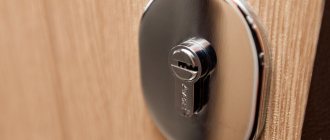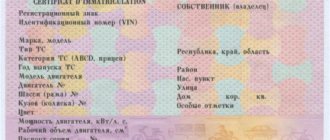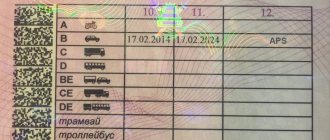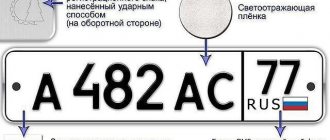How does trade-in work?
If you decide to use the trade-in service, you need to contact a car dealership that supports this program and sells the brand of car you want to purchase. Salon representatives will conduct diagnostics and check documents. Afterwards the owner will be informed of the discount amount. If the conditions suit both parties, you can immediately conclude an agreement and arrange the purchase of a new vehicle.
How is a car assessed?
During trade-in diagnostics, all technical characteristics of the vehicle, its current condition, and the presence of breakdowns and defects are checked. The inspection takes place at the service center of the car dealership itself or at any other service specified by the manager. The car owner is not involved in choosing a workshop.
All data on the technical condition is entered into the protocol. He contains:
- make and model;
- year of issue;
- complete set;
- mileage;
- information about the appearance of the car;
- indication and description of technical faults;
- a record of the availability of documents on the vehicle;
- data on the current market demand for this car.
The result of the assessment is a cash offer from the dealership manager. If there is mutual agreement, the amount is immediately included in the contract.
How to speed up a deal
For those who understand what a trade-in is, there is no question of how to speed up the transaction. The process itself takes only a few hours, and you can arrive at the salon in an old car and leave in a new one.
The process may be delayed by the lack of necessary documents or disagreement with the estimated value of your car. In the latter case, it is not recommended to waste extra time on trading. Typically, the dealer's offer amount does not change.
Benefits of using a trade-in program
Today, this program is only gaining popularity in the Russian Federation. However, many motorists have already appreciated its advantages.
Let's look at the main advantages of the service:
- The transaction is completed without risks, because the official dealer is a legal entity.
- Saving time, since the motorist will not have to look for buyers for his old car.
- Fast paperwork. You can get behind the wheel of a new car on the same day.
- The car dealership does not make any claims to the client after the transaction is concluded. If any defects were not found during the initial inspection, this is a problem for the dealer’s employees.
- Using the trade-in service, a citizen can exchange a car for a used car.
- Some car dealerships offer their customers the purchase of new cars on credit or in installments.
Program conditions
The trade-in scheme is simple: the car owner gives his car to the dealership, and the dealer counts its cost as a discount on a new product. In essence, there is an exchange with an additional payment on the part of the buyer. The purchase price of a used car can be applied as a down payment when purchasing on credit. Sometimes the salon itself pays extra if the buyer wants to exchange a more expensive model for a cheaper one.
Each dealer's criteria are different. For example, some showrooms only accept cars of their own brand or up to a certain year of manufacture. The following conditions are general:
- You can only get a discount on one product once, i.e. you won’t be able to trade in several cars at once to reduce the price of a new one.
- Cars that are owned by the buyer or if he has a power of attorney are accepted.
- Vehicles that are pledged or under arrest are not included in the program.
- The owner has no prohibition on registration actions.
For example, our car dealership accepts cars of any brand.
How does a trade-in happen: requirements for a car
To understand the basic requirements for a car, it’s enough to understand what a trade-in is and how it works. The dealer purchases the car for the purpose of resale. It is important that the appearance and technical characteristics of the vehicle interest the potential buyer. The seller wants to protect himself from possible legal proceedings. This leads to the following requirements:
- The car was purchased legally, all documents confirming ownership and registration certificate are available.
- The vehicle is in good condition, fully equipped (all doors, windows, parts are present).
- There is no serious external damage to the body or VIN number (minor scratches are acceptable).
Required documents
Each salon requires its own package of documents for trade-in. There are no fundamental differences, but it is better to check with the dealer in advance about its standard list. Having all the required papers when conducting diagnostics will significantly speed up the process and increase buyer loyalty. Be sure to prepare:
- Personal passport of the person making the sale.
- Vehicle registration certificate.
- Vehicle registration certificate.
- Notarized power of attorney (if the sale is not carried out by the direct owner).
There are two options for how you can legally formalize what a trade-in is. They consist of either 2 purchase and sale agreements or an exchange agreement. After signing, the car owner receives his copy of the agreement and the vehicle acceptance certificate.
What is a trade-in at a car dealership?
To understand what a trade in is, you need to understand its operating principle. This method of buying/selling is the following scheme:
- First, the car owner chooses the car dealership that suits him best.
- Inquires whether the enterprise operates using the trade-in system.
- He brings an old car to the seller.
- Determined by choosing a new car from those options that are present in the dealership.
- After completing the necessary paperwork, he picks up the new car from the dealership.
In other words, the owner of a used car, after assessing its value, takes it to the dealership, exchanges it for a new one, and compensates for the difference in price with money.
To participate in the trade in program, the car owner must provide the following documents to the car dealership:
- Vehicle owner's passport.
- Vehicle registration certificate.
- PTS and keys (2 or 3 sets).
- Document confirming passing the technical inspection.
- Service book (if available).
- Power of attorney (if the person handing over the car is not its owner).
All cars accepted by the car dealership must have a perfect legal history, and the documents must not show any signs of manipulation. For this purpose, salon employees conduct special checks.
Pros of a trade-in
To better understand what a trade-in is at a car dealership, we suggest understanding the benefits of both sides. There are a number of undeniable advantages for the car owner:
- By using the program, he saves himself from having to look for a buyer on his own. Selling a car can take months. It requires submitting advertisements, meeting with potential buyers, and answering calls and messages. When choosing a trade-in, all this will be handled by the car dealership even after the transaction is completed.
- Exchange of an old car for a new one takes place as quickly as possible. Usually all the necessary documents are always with the driver, so the contract will be drawn up within one day.
- Contacting a dealer with a good reputation guarantees minimal risks of deception and fraud.
- There is no requirement to carry out pre-sale preparation of the vehicle and participate in re-registration with the traffic police. The car dealership will handle all this.
- A new car is purchased immediately after the old one is sold, and the driver does not have to spend several days or weeks without a vehicle between these transactions.
- A car loan is available along with the trade-in.
The main advantage of the program remains the discount on a new car provided by the dealer. Depending on the market value of the available transport and the chosen model, the amount can vary from several thousand to half a million.
Minuses
The advantages of a trade-in for the dealer begin in the same place as the disadvantages for the car owner. The main task of a car dealership is to buy a car below market value and sell it at a higher price. There is no deception here as such. By purchasing your car, the company undertakes its maintenance, repairs, pre-sale preparation, advertising, searching for buyers, and re-registration. The dealer cannot predict the exact time of receipt of the benefit, so the difference with the market price always includes future costs and estimated risks.
Each company has its own idea of what a trade-in at a car dealership is. Some will reduce the cost of the car by 5-10%, others may voice an offer 25-30% less than the market value. It is always better to compare the conditions of different dealers and first use a special calculator to clarify the current price of your car.
Trade-in pitfalls
A trade-in at a well-known brand car dealership is an almost 100% guarantee of transaction security. When making an exchange, it is important to be wary not of fraud, but of some completely legal nuances:
- The client may be faced with the imposition of a particular make and model of a new car and the installation of additional equipment. It is better to determine in advance what kind of vehicle you are going to purchase and check with the dealer for its availability. You may have to wait a little longer for the exact model you want, but this is better than unreasonable overpayments.
- You should not agree to additional terms in the contract in the form of obligations to carry out repairs at your own expense or compensate the car dealership for costs. Trade-in is buying your car here and now in the condition in which it is.
- The contract must clearly state that the dealer is purchasing a car from you, and not helping you sell it on his site.
- It is important to take into account the moment of re-registration of the vehicle. The company will engage in its further resale, but during this time you should not be listed as the owner of the car. Otherwise, you will continue to pay transport tax and possible fines. The car dealership must be listed as the buyer in the contract. Blank spaces in this column are not allowed.
- Some companies offering trade-in carry out paid diagnostics. It is important to clarify this point in advance.
What is a trade-in, what are its advantages and disadvantages, and what are the pitfalls?
1. What is a trade-in?
Trade-in (or trade-in) is a service for accepting your car in exchange for the purchase of a new one, the price of which is reduced by the cost of yours, which is accepted as credit. This service is provided by dealers and car showrooms, and one of its main goals is to stimulate sales of new cars.
2. What is the procedure for buying and selling using the trade-in service?
The classic procedure for exchanging an old car for a new one is simple: you come to the dealer, he diagnoses your car and evaluates it, and if the offered price suits you, you sign a purchase and sale agreement for your car with the dealer and immediately purchase a new one, taking into account the “discount” , equal to the price of an old car. Accordingly, the dealer will deal with the sale of your old car - and you drive away with a new one.
3. What are the advantages of the trade-in service?
The benefits that a car owner receives when using a trade-in service are obvious. A car dealership relieves him of the need to sell an old car on his own: coming up with and publishing ads, taking dozens of calls and going to shows with capricious buyers, and then haggling until he sweats. In addition, with the right choice of dealer, the risk of fraud when completing a purchase and sale tends to zero. Little things like the absence of the need to do the so-called pre-sale preparation of the car and go with the buyer to the traffic police to re-register at the latter’s request are also on the list of positive features of the trade-in.
And this approach, as a rule, eliminates the need to be without a car while buying a new one - if the model you need is in stock at the dealer, you come to him with an old car and leave with a new one. Of course, to purchase this new car, you will also have access to a car loan - this can also be considered a plus. And finally, one of the main advantages at the moment is that the dealer provides an additional discount on a new car if it is purchased at a trade-in. Here the amounts vary greatly from brand to brand and from model to model: on a budget car you can save about 10-60 thousand, on a middle-class car - 50-150 thousand, and sometimes a good half a million can be knocked off the price tag of a premium sedan or SUV.
4. What are the disadvantages of the trade-in service?
However, you should not assume that a trade-in is an absolutely ideal way to change a car: there are also plenty of disadvantages and nuances. One of the main ones is the low estimated value of the car you are renting out: the car dealership is very likely to pay a price below the market value for it. And this is not a hoax: you should also soberly understand that the business needs profit, and your car will be put up for resale with associated costs. Of course, no one will repair it or do complex maintenance, but washing, dry cleaning and the salary of the manager of the used car department will be included in the potential profit for your car. Therefore, be prepared for the fact that the offered price will be several tens of thousands of rubles less than those indicated for similar items in private advertisements.
Another feature of a trade-in that reduces its attractiveness is the limited choice and sometimes the imposition of a car. After all, if you want to drive away in a new car the same day, you need to choose one of those available at the dealer. But here all the standard “tricks” of overly enterprising sellers can await you: they will persistently offer you a car that is “convenient” for them and convince you to install additional equipment, and often overpriced “extras” will already be installed on the car being sold without the possibility of them refuse, which significantly changes the final price tag and reduces the joy from the discounts received.
In addition, it is worth remembering that at a trade-in you can usually purchase not only a new car, but also one of those that were handed over to the car dealership by other owners. However, in this case, the purchase loses the charm of novelty and conventional ideality: you should not expect that, for example, a Ford car parked at a Kia dealer has been thoroughly checked and carefully serviced - such a purchase should be approached as a standard market procedure. And given that the requirements for cars offered for trade-in are low, the risk of encountering a rather problematic car at a car dealership is palpable. The only advantage in this case is the reduced risk of having “documentary” problems with the car: as a rule, dealers carefully check the cars accepted for trade-in for legal purity, and buying a credit or seized car from them is almost impossible.
5. What pitfalls exist in the trade-in service?
As mentioned above, when planning a trade-in, it is worth assessing the car in advance and agreeing with the dealer on what kind of car will be purchased - you may have to order it and wait, and the dealer must agree to this. It is also worth understanding that the estimated value of your car announced to you may change during the waiting period - the conditions for maintaining it should be agreed upon with the dealer.
Articles / Popular questions How to arrange the purchase and sale of a car and save money Buying and selling cars is the basis for the existence of the automobile market. This procedure itself is quite simple - without taking into account the choice of car and the pitfalls associated with it, of course. In… 19295 3 11 03/20/2017
The main condition for the accuracy of everything we have listed above is the honesty and official status of the dealer. If you are dealing with an unofficial dealer of a brand or even with a multi-brand car dealership that sells everything, then you should not expect any guarantees - price tags, configurations or purchase conditions can change overnight. Therefore, when signing any contract with an official dealer, you should be careful, and with an unofficial dealer, you should be three times careful.
Another way to take money from the car owner can be all sorts of additional conditions. If you are offered to carry out any pre-sale preparations or repairs at your own expense, including them in the mandatory conditions of the trade-in service or promising to compensate for the costs through a discount on a new car, it is highly likely that you are being deceived. The procedures will be carried out in the “interested” service center, the fact of the repair will not be confirmed by anything, and additional technical problems that may arise during the “repair” process will remain yours and will further reduce the cost of the car. Therefore, under normal conditions, all expenses associated with the sale of a car are borne by the dealer - you give him the car “as is” for the amount specified in the purchase and sale agreement - and you definitely shouldn’t agree to do something at your own expense.
You should also not agree to “commission” schemes with dealers and car dealerships that do not inspire confidence. As an alternative to a trade-in, you may be offered help with the sale by displaying the car at the dealership. This is also fraught with tricky additional agreements, including expensive pre-sale preparation, a fee for a place on the site, a sales commission and paid “qualified assistance” when re-registering a car. So if one car dealership is not ready to buy your car on its own, you simply go to another one.
6. What is the correct sequence of the trade-in procedure?
When planning to trade-in your car, be sure to visit several dealers and make a preliminary assessment, and also find out about the conditions and discounts that will be offered to you. Do not hesitate to clarify these details - after all, you need to sell the car as profitably as possible, and the conditions in different car dealerships may also differ. Having chosen the best offers, conduct an inspection at these dealers: the exact final amount that you will be offered for the car will be announced only based on the diagnostic results. If after this you are offered a price that suits you, you can move on to choosing a new car.
Here, too, you should not be timid: if the desired model is in stock, but it has additional options installed that can be removed or purchased cheaper, try to negotiate their dismantling or reducing their cost. History knows examples when a dealer reupholstered the seats of a C-class hatchback with leather (artificial, of course), but changed them back to fabric ones from another car by agreement with the client. Removing prohibitively expensive crankcase protection and wheel rims is in the same category. Of course, the chances of this are not that great, but it’s worth a try. Well, the alternative is to order another car and wait.
When both the desired and existing old car are at the dealer, you can begin the registration procedure. There is nothing unusual about it: first you sign a purchase and sale agreement for an old car with the dealer, and then pay the difference and purchase a new car or draw up a loan agreement for its purchase.
An extremely important point:
in addition to the standard purchase and sale agreement with the dealer, you need to conclude an agreement that will indicate the terms for the sale of your car or the authority to terminate the registration of the car by the dealer - in this case, you will need to issue a power of attorney for these actions. The point here is that after purchasing a car, the dealer is unlikely to re-register it in his name, and until the car finds a new owner, transport taxes and fines will be the concern of the previous owner. Thus, it is the dealer who must take responsibility for the sale and control over the re-registration of the car by the new owner. If these conditions were not met, and you, for example, received a fine for your sold car, you have the right to visit the traffic police and stop registering the vehicle , and then appeal the fine by providing a sales contract. In addition, it is worth including in the contract the service of informing you, as the previous owner, that the car was sold by a car dealership.
Stages of the trade-in procedure
Before signing a purchase and sale agreement using the trade-in system, you must go through the following steps:
- Contact the dealer and get a preliminary assessment of the car. It is carried out according to a brief description provided by the owner. You can immediately check the availability of the new car model you need.
- If you are satisfied with the preliminary price, then a time will be scheduled to undergo detailed diagnostics at the company’s service center. You need to bring the car and take all the documents. On average, the procedure takes about 3 hours.
- After the technical inspection, a protocol is drawn up and the final price of the car is set. With the consent of the car owner, it is immediately included in the purchase and sale agreement. The agreement is signed by both parties, and a transfer and acceptance certificate is drawn up.
- Another sales contract is drawn up for a new car, taking into account the discount received. The buyer is invoiced for additional payment. After payment, documents for a new car are drawn up.
Read how trade-in happens at our Avtostar car showroom in Simferopol on the street. Borodina, 14E.
What are the benefits of a trade-in?
The advantages of the trade-in system are actually obvious. First of all, it saves time and nerves. Those who sell cars often have to communicate with not very pleasant people, spend time meeting with them and sometimes explain obvious things. And often sellers listen to boorish offers from “applicants” to pick up a car with a price tag of, say, 600 thousand “right now for four hundred.” The second advantage is minimizing the risk of fraud when preparing documents (purchase and sale agreements) and the absence of the need for pre-sale preparation. Some cars are not very liquid and are sold on the secondary market for a very long time - the process can drag on for a completely indefinite period. By using this service, you are guaranteed to sell the vehicle quickly. Here is the third plus, from which the fourth follows - selling an old car and buying a new one in virtually one day.
The fifth virtue deserves special mention. By purchasing a new car through trade-in from an official dealer, you can get a considerable discount! Some brands have their own program for so-called loyal owners who do not betray the brand, allowing them to save up to hundreds of thousands of rubles.










